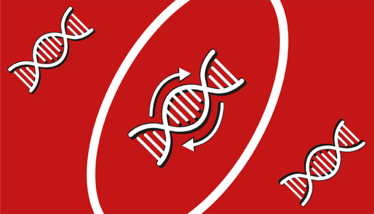Flip It and Reverse It
“Reverse metabolomics” opens a new door into untargeted metabolite discovery and human metabolism
Jessica Allerton | | 2 min read | News

Structure annotation has been a considerable challenge in metabolomics research for some time; a typical untargeted metabolomics study can annotate about 10 percent of the data with structures. And that’s why Emily Gentry, while working in the Dorrestein Lab at the University of California San Diego, used her background in synthetic organic chemistry and mass spec to turn metabolomics on its head. With Gentry’s “reverse metabolomics” approach, the team were able to discover new biomolecules (1).
“Reverse metabolomics is a quick way to synthesize a bunch of molecules then see whether they are found in humans, and, if so, where,” says Gentry. “Instead of detecting every compound first then identifying their structures based on MS2 (as is done in traditional untargeted metabolomics), we identify structures we are interested in first, synthesize them, then detect where their spectra are found in public data.”
Gentry and her colleagues were able to synthesize and explore various classes of metabolites. But with over 2,000 compounds to synthesize – and a need for consistent quality control on every spectra – the research was challenging. And that wasn’t the end of the headaches: “We ran searches for each one that often resulted in thousands of matches,” says Gentry. “It was a huge amount of data to check and analyze.”
But perseverance pays, and the team were able to discover many new compounds – including conjugated bile acids that were elevated in active Crohn’s disease. After further testing, these bile acids showed pathophysiological connections to inflammatory bowel disease (IBD).
“This was surprising,” says Gentry. “And it was the moment we realized our approach could be used as a general strategy to find metabolites related to disease.”
The team behind the Nature paper is hopeful that, with further research, we could see diagnostic and therapeutic applications for IBD – along with other diseases.
Looking at the bigger picture, Gentry believes in a bright future for reverse metabolomics. “Our reverse approach can provide the metabolomics community with library spectra from thousands of synthesized standards,” she says. “As more compounds are synthesized and added to public libraries, there will be an increase in annotation rates of untargeted metabolomics data and therefore, better knowledge about human metabolism. Hopefully other biologically important metabolites that have been overlooked through the years will come to light because of it.”
In the meantime, Gentry – now at Virginia Tech – will continue her painstaking mission: “We will continue using reverse metabolomics to gain new insight into how small molecules in the human body may impact health. I can’t wait to see what future discoveries will be made.”
- EC Gentry et al., Nature (2023). DOI: 10.1038/s41586-023-06906-8.
Associate Editor, The Analytical Scientist















